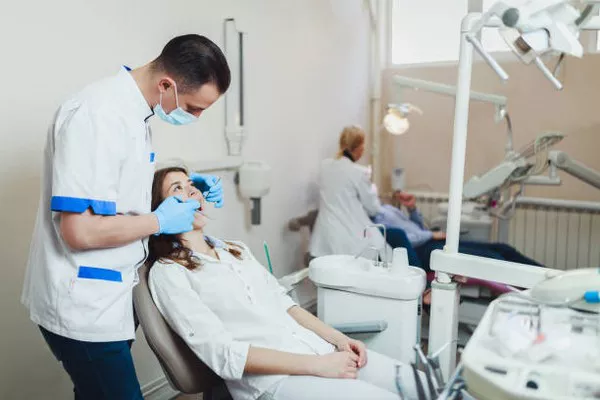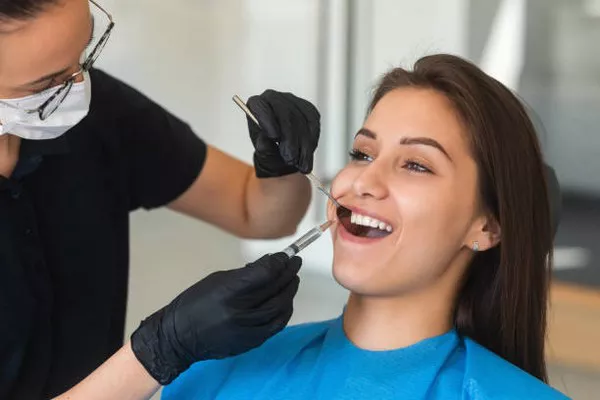Teeth whitening has become a popular cosmetic dental procedure in recent years, with many people seeking to achieve a brighter, more radiant smile. There are numerous teeth whitening products and treatments available on the market, ranging from over-the-counter options like whitening toothpaste and strips, to professional treatments performed by dentists. One common feature of many teeth whitening treatments is the use of LED lights to enhance the effectiveness of the whitening gel. But do LED lights actually whiten teeth? Let’s take a closer look.
Understanding Teeth Whitening
Before delving into the role of LED lights in teeth whitening, it’s important to understand how the process works. The outer layer of our teeth is made up of enamel, which can become stained or discolored over time due to a variety of factors, such as:
1.Aging
2.Consumption of certain foods and beverages (such as coffee, tea, red wine, and berries)
3.Smoking or tobacco use
4.Poor oral hygiene
5.Certain medications
Teeth whitening products work by removing these stains from the enamel, either through a chemical reaction or physical abrasion. In most cases, teeth whitening products contain hydrogen peroxide or carbamide peroxide, which break down into oxygen molecules that penetrate the enamel and break apart the stain molecules.
LED Lights and Teeth Whitening
So where do LED lights come in? LED stands for “light-emitting diode,” and these devices emit a specific wavelength of light that has been shown to accelerate the breakdown of hydrogen peroxide and carbamide peroxide molecules. This means that when LED lights are used in conjunction with a teeth whitening treatment, the whitening gel is activated more quickly and efficiently, potentially leading to faster and more dramatic results.
LED lights used in teeth whitening typically come in two forms: handheld devices that emit blue light, and overhead lights that are used in professional dental settings. The blue light emitted by these devices is thought to activate a photoreactive component in the whitening gel, which then breaks down into free radicals that aid in the bleaching process.
What the Science Says
So, do LED lights actually whiten teeth? The answer is somewhat complicated. There is some evidence to suggest that LED lights can enhance the effectiveness of teeth whitening treatments, leading to brighter and more evenly colored teeth. However, the extent of this effect appears to vary depending on several factors, such as:
- The type and concentration of whitening gel used
- The duration and frequency of the LED light exposure
- The individual’s baseline tooth color and stain severity
For example, a 2019 study published in the Journal of Clinical Dentistry found that using an LED light in conjunction with a hydrogen peroxide-based whitening gel led to significantly greater improvements in tooth shade compared to using the gel alone. Another study published in the same journal in 2020 found that using an LED light during a single in-office whitening treatment resulted in greater whitening efficacy compared to a non-light activated treatment.
However, other studies have produced more mixed results. A 2016 review of the literature published in the Journal of Esthetic and Restorative Dentistry found “no significant difference” in tooth whitening outcomes between treatments that used LED lights and those that did not. And a 2022 systematic review and meta-analysis published in the European Journal of Dentistry concluded that while LED lights may help to increase the effectiveness of teeth whitening treatments, there was a lack of high-quality evidence to support their use.
It’s worth noting that the American Dental Association (ADA) has not yet evaluated the safety or efficacy of LED lights for teeth whitening purposes. Therefore, it’s important to consult with a licensed dentist before using any teeth whitening products or devices, including those that incorporate LED lights.
Other Considerations
LED lights are not the only factor to consider when it comes to teeth whitening. It’s also important to:
- Choose a reputable whitening product or treatment that has been tested for safety and efficacy
- Follow all instructions carefully, including the duration and frequency of use
- Be aware of potential side effects, such as tooth sensitivity or gum irritation
- Maintain good oral hygiene habits, such as brushing and flossing regularly, to prolong the results of the treatment
Conclusion
In conclusion, while there is some evidence to suggest that LED lights can enhance the effectiveness of teeth whitening treatments, their precise role in the process remains somewhat unclear. As with any cosmetic dental procedure, it’s important to consult with a licensed dentist before using any teeth whitening products or devices, including those that incorporate LED lights. Additionally, it’s important to choose a reputable product or treatment, follow all instructions carefully, and maintain good oral hygiene habits to ensure optimal results.
Related Topics:




























